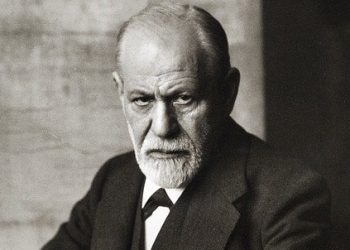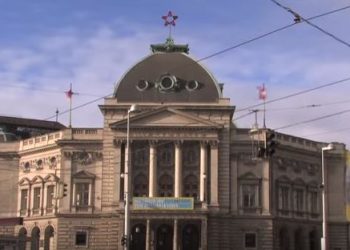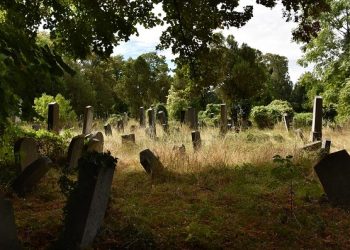The splendid palace in the suburbs of Vienna is a place of supreme historical importance, and its story and beauty can be discussed at length. This article focuses on the history of Schönbrunn Palace and how it transformed from a simple agricultural area into the magnificent complex that still stands in all its glory today. If you do not intend to delve deep into the history of the place, you can read another article we have prepared about all the attractions, museums, and activities in the palace complex.

The Story of the Palace – From Hunting Ground to Royal Splendor
When standing in the magnificent Schönbrunn square and looking around, it is hard to imagine that this was once a rather deserted area in the suburbs of Vienna, used for hunting and agriculture. Interestingly, the original name of the Schönbrunn complex was Katterburg, and it had been in agricultural use since the Middle Ages. In the 14th century, the complex included a farm with a windmill, as well as several vineyards and fields.
In the 16th century, the Habsburg family set their eyes on the complex, and Maximilian II purchased it, turning it into a breeding ground for deer and stags. After Maximilian’s death, the complex passed to Rudolf II, who saw no particular importance in it and barely maintained it.
Schönbrunn during the 17th century
At the beginning of the 17th century, the ruler Matthias of Habsburg took possession of the complex and made it his hunting ground. Legend has it that one day, while Matthias was walking through his hunting grounds in search of a fine target, he came to an area with a beautiful spring (in German, the words “beautiful spring” are pronounced as Schöner Brunnen). The complex received its familiar name – Schönbrunn – after this beautiful, hidden spring.
After the death of Matthias, the hunting ground passed into the possession of Ferdinand II and his wife, Eleonora von Gonzaga. Both were avid hunting enthusiasts, and Schönbrunn was the perfect place for their hunting events. When Ferdinand II died prematurely, Eleonora gained full control of the complex and ordered the construction of a magnificent manor house befitting her status. The construction of the manor house was completed in 1642, and in the same year, the name of the complex was officially changed from Katterburg to Schönbrunn.
In 1683, during the Ottoman siege of Vienna, the manor house was damaged as a result of looting by Turkish soldiers. The damage to the manor house was a good reason to renovate and change it. At this time, Leopold I was in power, and he decided to give Schönbrunn to his son, Crown Prince Joseph, and to build for him a residential building of spectacular beauty. The planning and construction of the new residential palace were carried out by the famous Baroque architect Johann Bernhard Fischer von Erlach. Architect von Erlach’s plans were extremely ambitious.
The construction of the palace began in 1696. The ruined manor house at Schönbrunn served as the foundation upon which the palace was built. Four years later, in 1700, the central structure of the palace was completed, but economic problems and wars caused the construction to stop completely, so the palace wings were not fully finished.
The half-built palace became the residence of Wilhelmina Amalia after the death of her husband, Joseph I.
Schönbrunn during the 18th century
In 1728, Schönbrunn passed into the ownership of Emperor Charles VI, who was Joseph’s brother and inherited the crown after his brother’s death. For Charles, Schönbrunn was merely a hunting lodge, and he used the place mainly as a pheasant hunting ground. Eventually, he gave the palace to his daughter, Maria Theresa, who loved the palace and its gardens very much. Maria Theresa’s great affection for the palace and gardens is, in fact, the main reason it became such an important and magnificent place.
Maria Theresa – The “Savior” of Schönbrunn Palace
During the reign of Maria Theresa, Schönbrunn became a royal and political center. By her order, the old palace was converted into a royal palace – the summer residence of the House of Habsburg!
The first development phase of the palace took place between 1743 and 1749 under the supervision of the gifted architect Nikolaus Pacassi. The original structure was largely preserved, and mainly, additional magnificent wings were added to serve as the living quarters for the royal family. The palace courtyard was changed and expanded to allow for carriage parking, and greenhouses were built for growing various fruits. A theater was also built for Maria Theresa, where her children, among others, performed as singers and actors.
During the summer months, no fewer than 1000 people lived and worked in the palace!
The second development phase of the palace lasted for about 10 years, from 1753 to 1763. The royal family was growing at a rapid pace, so the construction focused mainly on expanding the living space in the palace and building additional apartments for the Habsburgs. In addition, many resources were invested in renovating the palace’s guest and event rooms. These rooms were decorated with ceiling paintings and impressive carvings on their walls. The rooms facing the gardens were also renovated and decorated in the Rococo style, combining mirrors and impressive wall decorations. Due to Maria Theresa’s interest in Far Eastern art, several rooms were built to store her collections of Asian artifacts: porcelain, silk, lacquerware, and more.
The death of Franz Stephan, Maria Theresa’s husband, in 1765 was a tragic event for her that led to several changes in the palace. Maria Theresa converted her husband’s study into a memorial room and designed it in an incredibly magnificent way, a design that has been preserved to this day.
The Palace Gardens
The last project initiated by Maria Theresa was the design of the palace gardens. The development work on the palace gardens was carried out by the talented architect Johann Ferdinand Hetzendorf von Hohenberg. Under his supervision, several structures were built in the palace gardens, such as the Gloriette, the Neptune Fountain, the Roman Ruins, and the Obelisk Fountain. In addition, statues in an ancient style were placed throughout the park. The completion of the upgrade works of the palace and gardens was finished shortly before Maria Theresa’s death in 1780.
After her death, the palace ceased to be the summer residence of the royal family, and for about 12 years it was not used until Emperor Franz II came to power.
Schönbrunn during the Napoleonic Wars
During the Napoleonic Wars, in 1805 and 1809, the palace was under the control of the French commander Napoleon, who resided in the palace himself and turned the magnificent memorial room that Maria Theresa had designed in memory of her husband into his command center.
Napoleon’s victory led to the dissolution of the Holy Roman Empire in 1806, after which the Austrian Empire was established. Emperor Franz II continued to be the ruler of the new empire, and he led extensive renovations in the palace to upgrade it according to the standards of the time. The architect Johann Aman was responsible for the renovation work, and his work certainly led to changes in the palace’s appearance (not really for the better). Aman had the impressive decorations on the exterior walls of the palace removed, leaving only a few of them. The exterior walls of the palace became somewhat simple and plain, and that is how they have been preserved to this day.
Schönbrunn in the era of Franz Joseph and Elisabeth
After the end of Emperor Franz II’s reign, Emperor Franz Joseph came to power. Franz Joseph was born and raised in Schönbrunn Palace, and he loved it very much. In fact, for a significant part of his life, Emperor Franz Joseph lived in Schönbrunn until his death in 1916.
In preparation for Franz Joseph’s wedding to Duchess Elisabeth (Sisi), renovations were carried out in the apartments of the western wing of the palace, which were intended to serve as their residence. Later, the children of Franz Joseph and Elisabeth also lived in this part of the palace.
Between 1869 and 1873, the palace underwent its last significant renovation. This renovation was done in preparation for a world exhibition planned to be held in Vienna in 1873. The renovation mainly included the restoration and preservation of the Rococo decorations in the palace rooms. In addition, the large reception rooms of the palace – the Great and Small Galleries – were renovated, during which the walls were covered with beautiful tapestries.
Why is the Palace Yellow?
The color of Schönbrunn’s exterior walls is a light shade of yellow. This shade has been nicknamed “Schönbrunn Yellow.” Many tend to think that Schönbrunn Palace has always been yellow, but this is not the case. The palace was likely painted yellow only in the mid-19th century.
The original colors of the palace were light orange, beige, red, gray, or gold. Researchers speculate that the palace was painted yellow in memory of Maria Theresa’s days when the palace was painted beige or light orange.


















